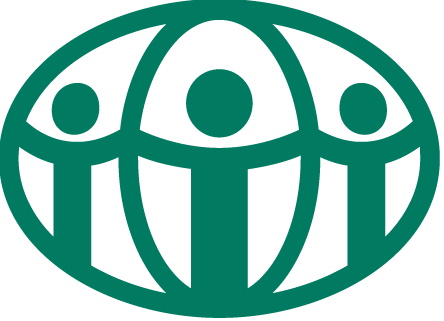During the life of activity (LoA) of the action, the project achieved the following results:
Increased Employment in the Cashew Value Chain Industry: The BAAT Project supported 14,966 (103.2%) beneficiaries with job opportunities against its final target of 14,500. This performance represents a 3.2% achievement over the project’s final target. The final evaluation report stated that the project has significantly impacted generating employment opportunities in the cashew sector. Against a target of 75.000 final beneficiaries, the evaluation team crudely estimated that some 94,812 value chain actors had been indirectly employed through the BAAT interventions.
Increased Beneficiaries’ Income in the Cashew Industry by 30%: At the start of the project, the average annual farmer income was GH¢9,527.69 (€1,714.98)[1]. As revealed by the final evaluation report, the BAAT Project has improved the livelihoods of most participating farmers through increased cash revenue from cashew farming. The initiative trained 6,007 (117.8%) compared to a final target of 5,100 cashew farmers to intercrop maize, groundnut, yam, vegetables, etc. The farmers also received training in improved farm management and cashew nut collection techniques to grow their incomes. The increase in revenue could be attributed to the high uptake and use of improved inputs, good agronomic practices (i.e., row planting, pruning, and thinning out, application of recommended plant spacing, use of improved planting materials, and manuring or fertilization), and other support services offered by the BAAT Project. Average annual household income increased by more than GH¢4,900 (€617.14), an increment of about 34.1% over the baseline—demonstrating a substantial achievement.[2] This outcome represents an over-achievement of 4.1% compared to a final target of 30%.
Sixty Percent (60%) Increase in Climate Change Adaptation (CCA) Knowledge Among the Target Group: Compared to a final target of 8,200 people, 8,409 (102.5%) new, existing, and medium-large cashew farmers received training from the project to mitigate and adapt to the adverse effects of climate change on their farming activities. The project also trained the farmers on fundamental environmental management practices. The action used on-farm demonstrations and radio talk shows organized in the intervention districts to reach the beneficiaries. At the project’s onset, 22.1% of all the baseline survey respondents said they were aware of measures to adapt to deal with the impacts of climate change on their operations. The final evaluation re-based and categorized this overall percentage of CCA knowledge level into 25.5% for BAAT farmers and 11.3% for the non-BAAT beneficiaries. Findings from the final evaluation indicate that more farmers now have the requisite technical knowledge of climate-sensitive practices to adapt to their farms. The BAAT farmers’ knowledge of CCA increased significantly from the base of 25.5% to 99.2% at closeout. The net knowledge increase about CCA is 73.7%, implying that the knowledge and awareness of climate change and CCA has improved among project beneficiaries due to their participation in the project training and activities. This performance represents a 13.7% over-achievement compared to a final target of 60%.
Ten Percent (10%) Increase in Cashew Revenue for Municipal and District Assemblies: The baseline study of the BAAT Project revealed that Municipal and District Assemblies (MDAs) did not have proper records on revenue mobilized from the cashew sector. The major challenge confronting the MDAs in effectively mobilizing revenue from the cashew sector included a lack of consistent databases on value chain actors. Another challenge was the award of revenue collection contracts to private firms. These firms charged up to 30% commission on the total amounts collected, which eroded the revenues of the MDAs. Again, MDAs did not disaggregate Internally Generated Funds (IGF) made from the sector. Thus, the assemblies did not have specific entries for cashew revenues in their trial balances. As a result, the baseline study recommended setting the base revenue emanating from the cashew value chain to zero percent (0%). During implementation, the project developed a comprehensive geodatabase to help the assemblies trace the business locations of the cashew value chain actors. Fourteen thousand two hundred forty-nine (14,249) out of the final target of 14,500 cashew actors had been GPS-mapped or geo-referenced into the geospatial repository at closeout. The project assisted and contributed to creating cashew revenue entries on MDAs’ trial balances. The action also supported the MDAs in establishing a task force for cashew revenue mobilization, coordination, and regulation of the activities of the sector actors, such as buyers or aggregators, and transporters. With support from the assemblies, the project linked the cashew farmers and aggregators to four (4) major marketing centers and off-takers (i.e., OLAM International, Kingdom EXIM Ghana Ltd., Red River Foods, and BAAD Ventures). The move facilitated Raw Cashew Nut (RCN) trade in the area. These revenue mobilization efforts for the cashew sector paid off as the MDAs recorded significant incomes from the industry. The final evaluation report indicated that the cashew sector contributed about 20% to the assemblies’ revenue at the end of the project. Thus, the project significantly impacted revenue from the cashew sector. According to the report, the gains from the cashew sector were meaningfully higher for Jaman North than in the other districts.
Source: The final narrative report of THE Bono-Asante Atea (BAAT) Project
Date: April 29, 2022
@adraghana

